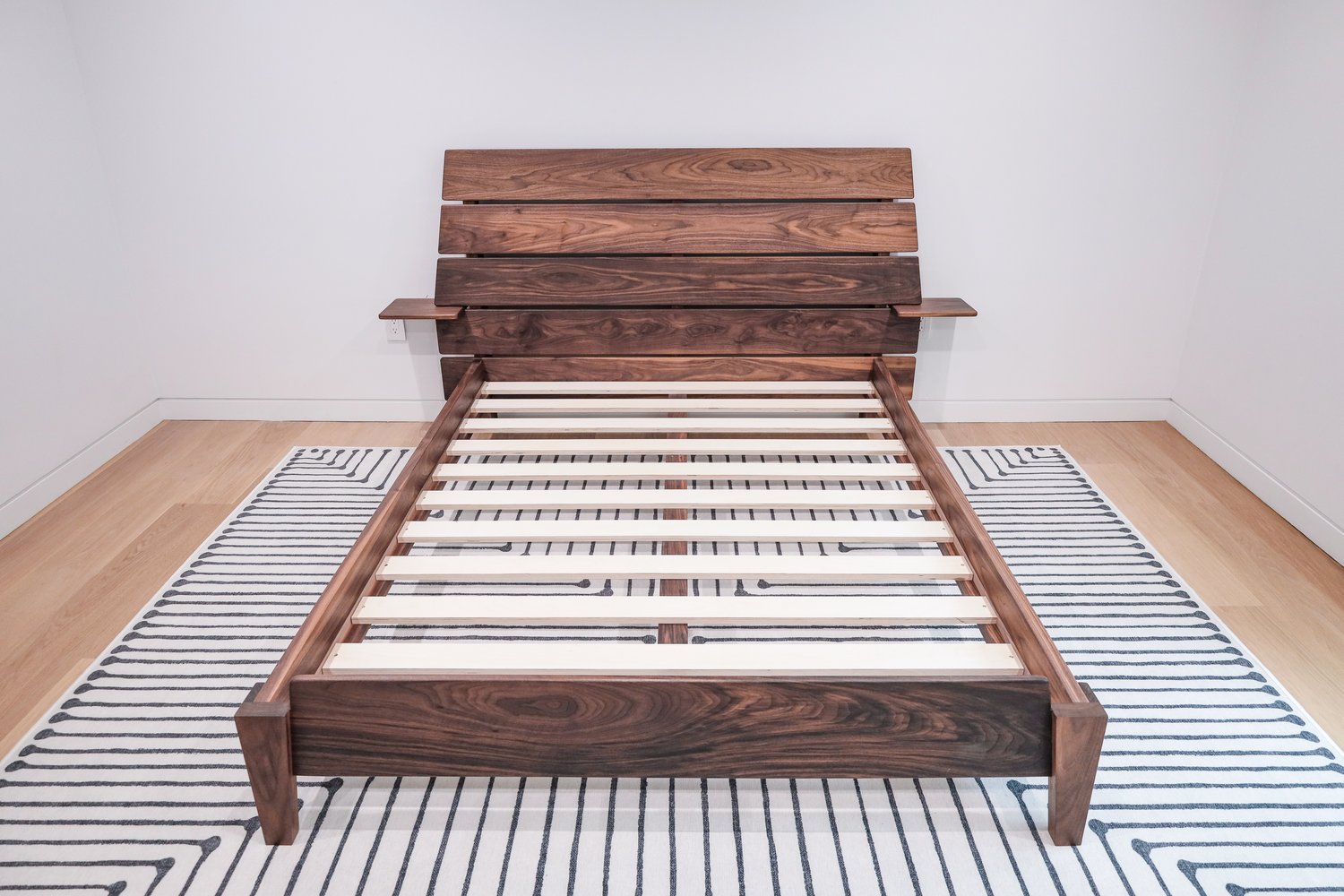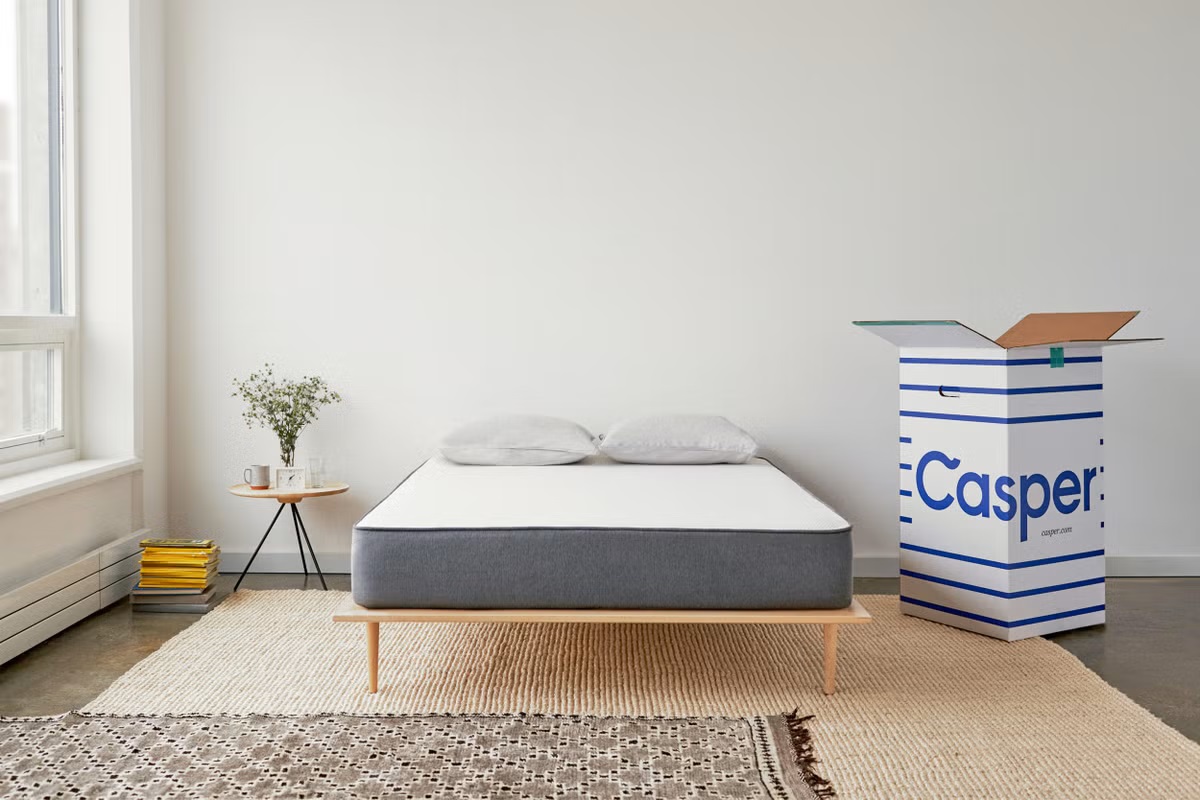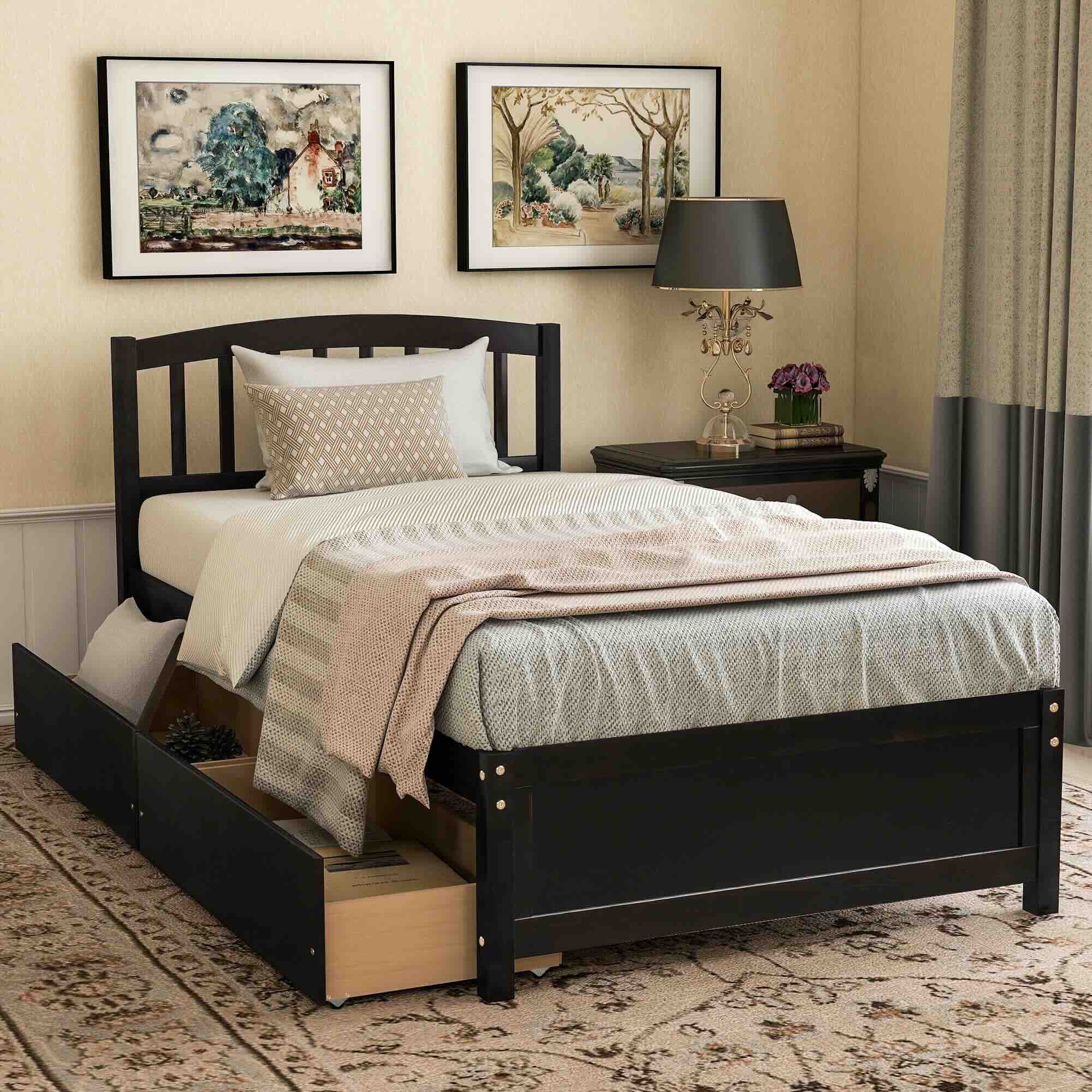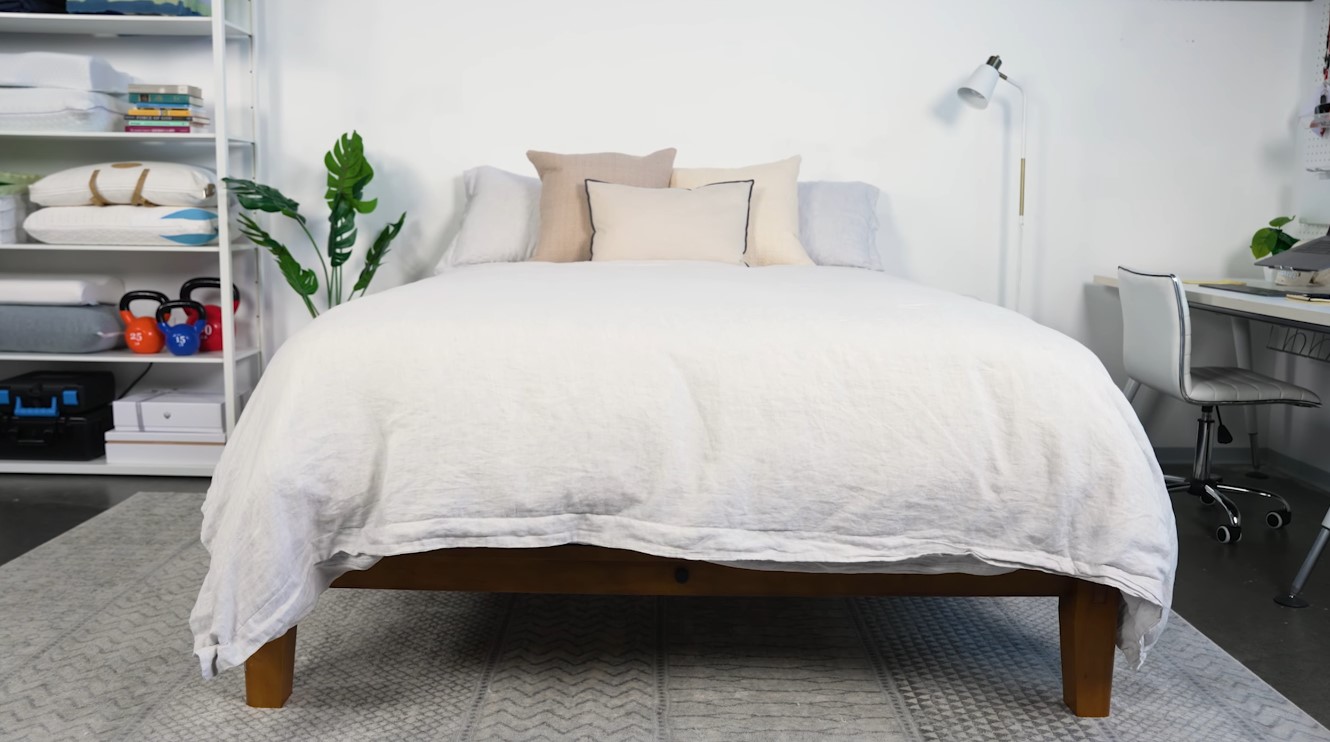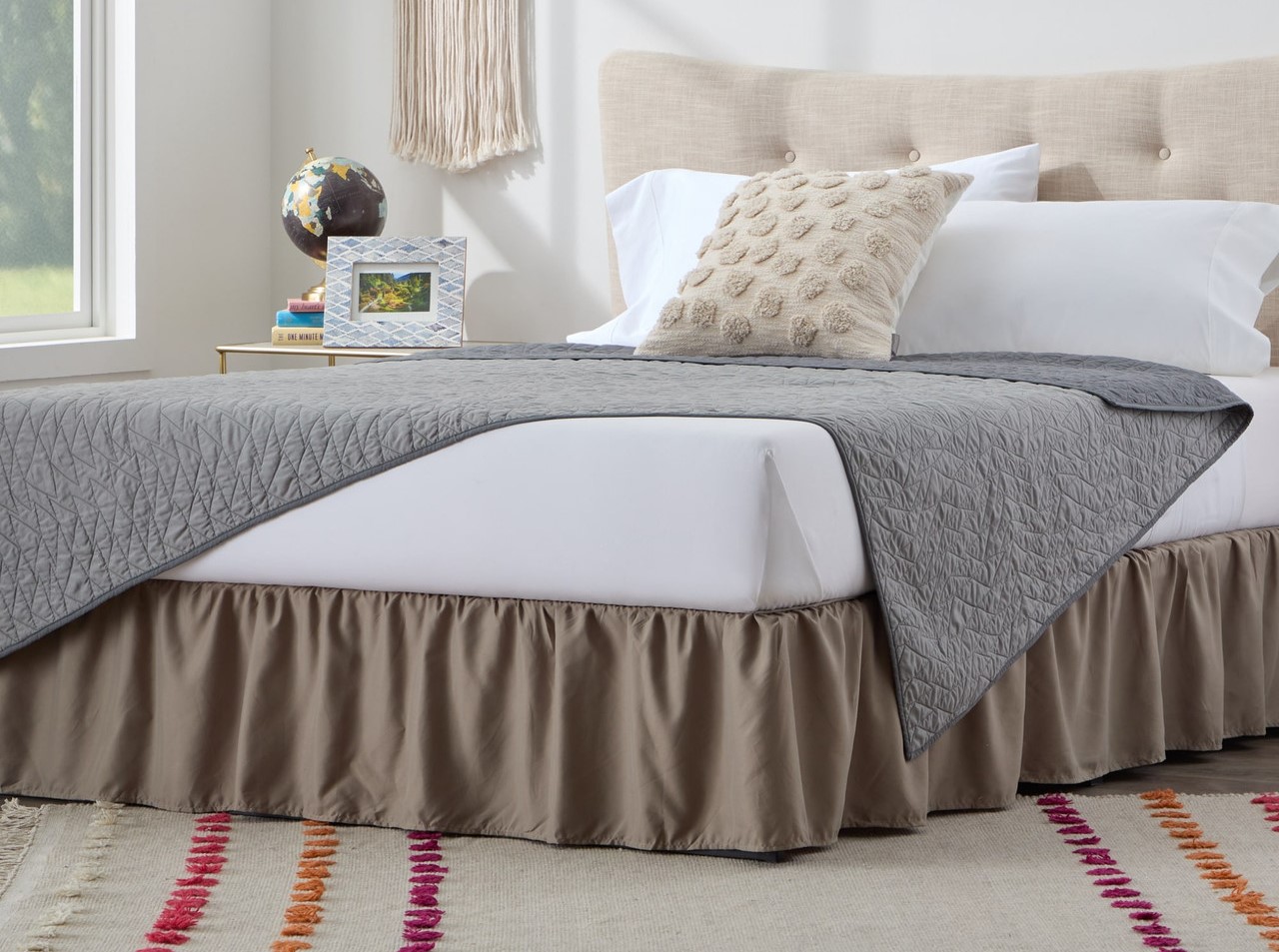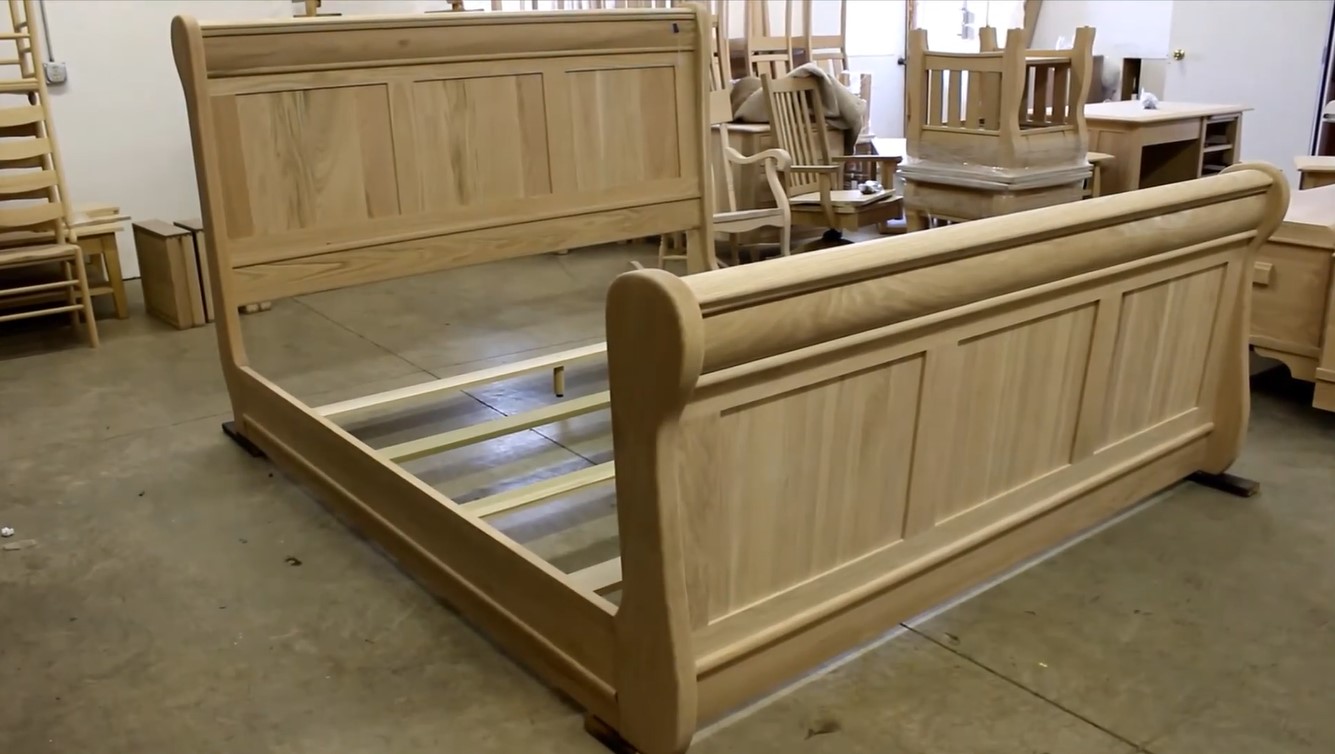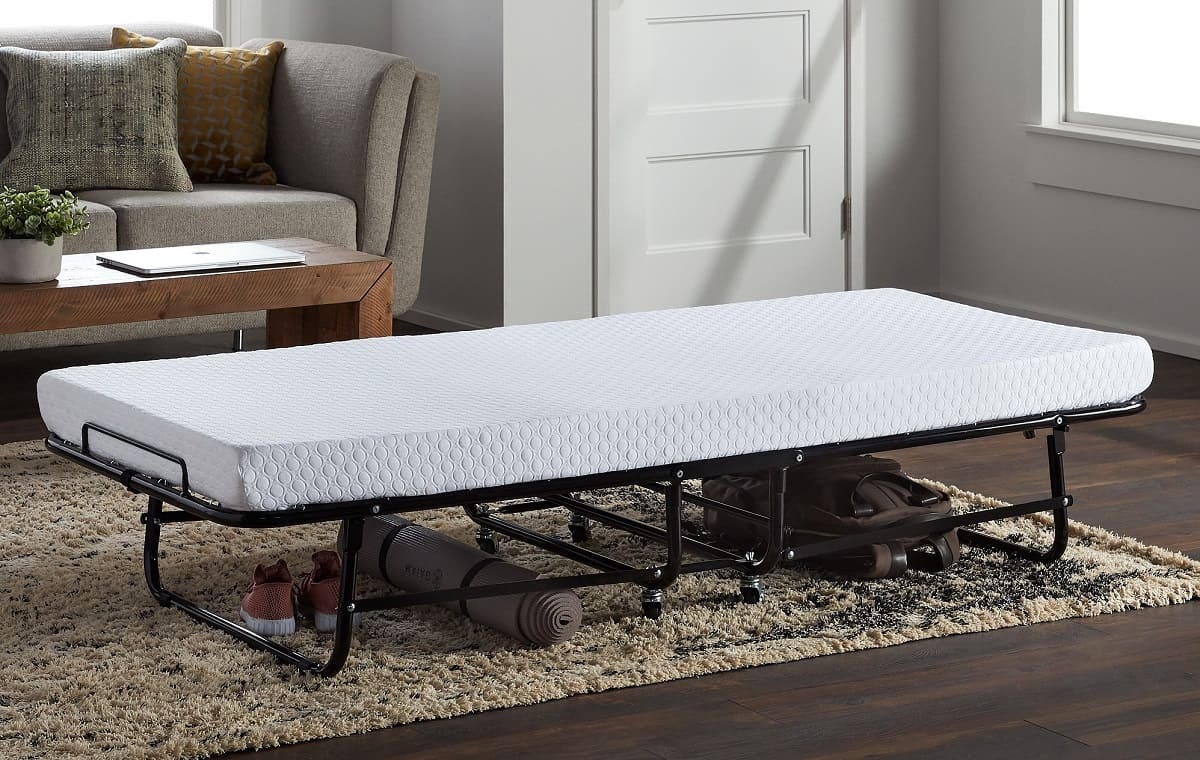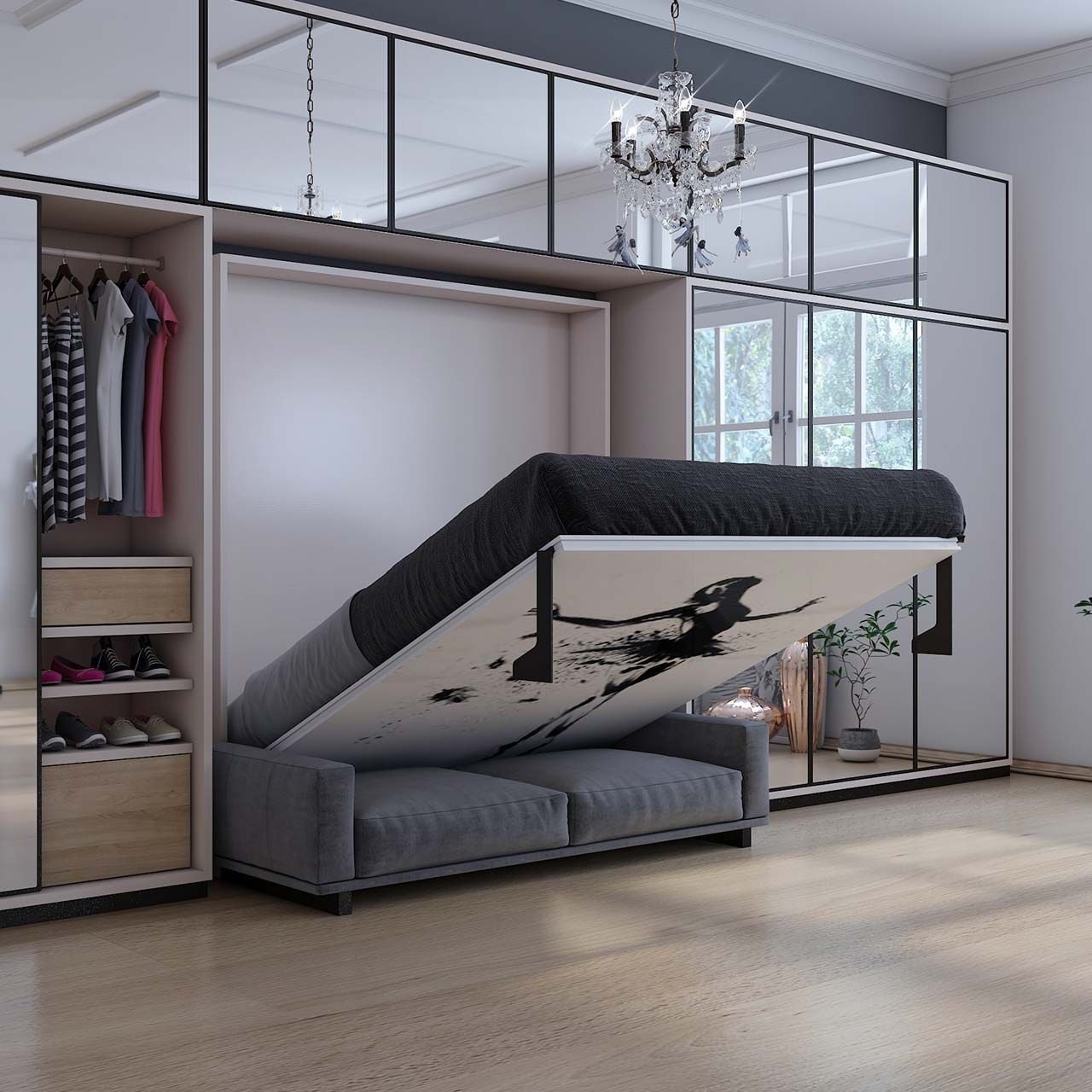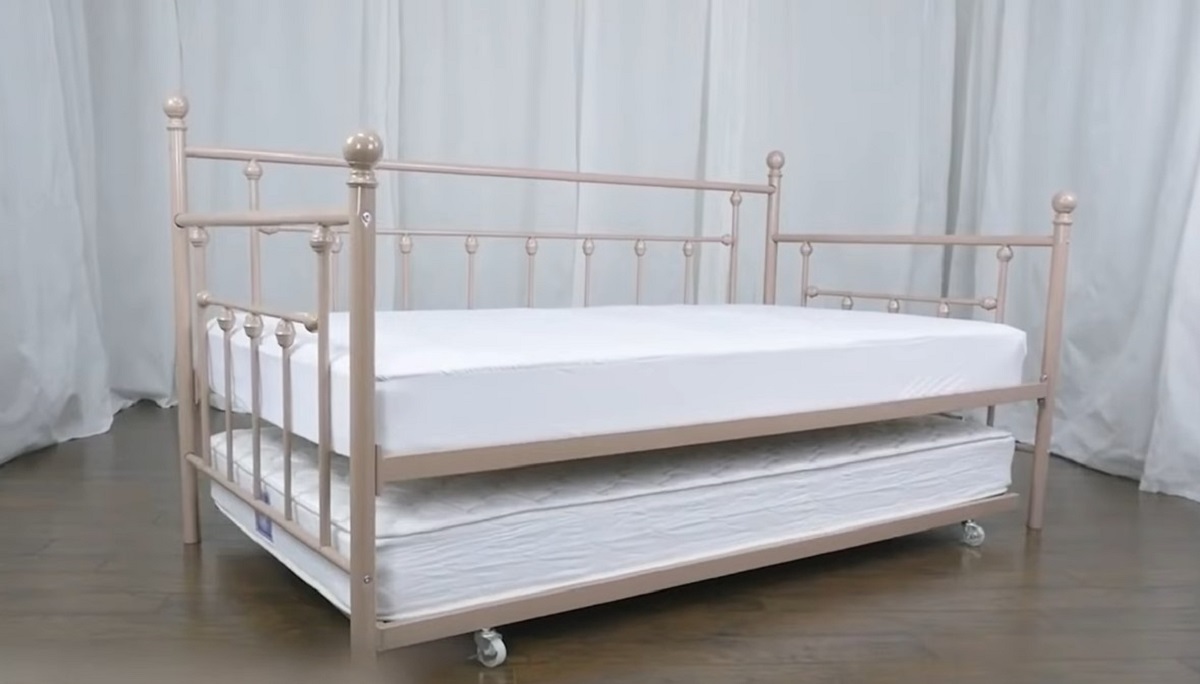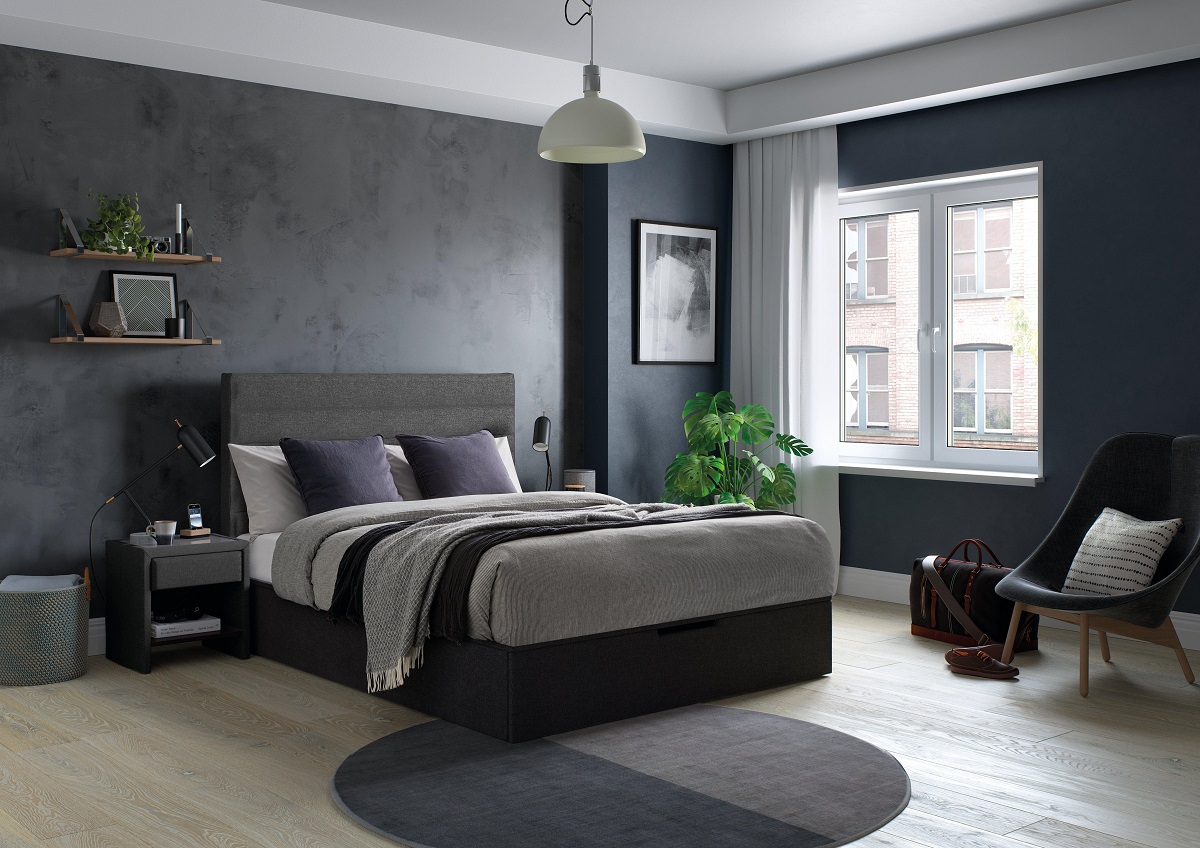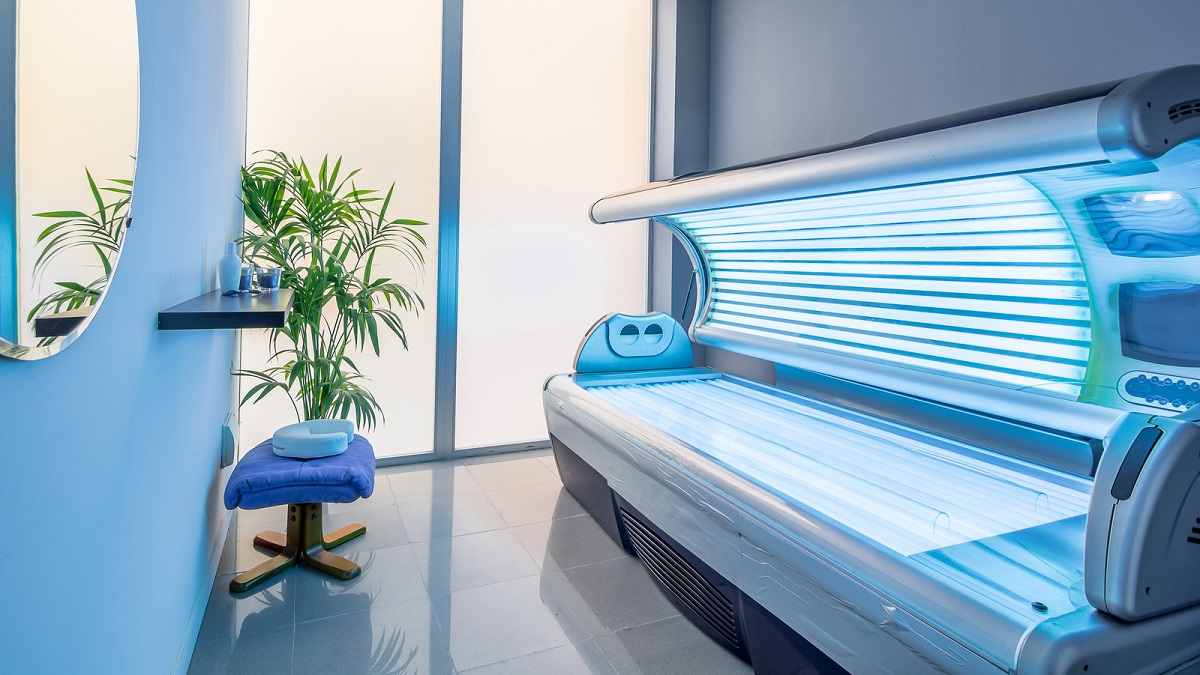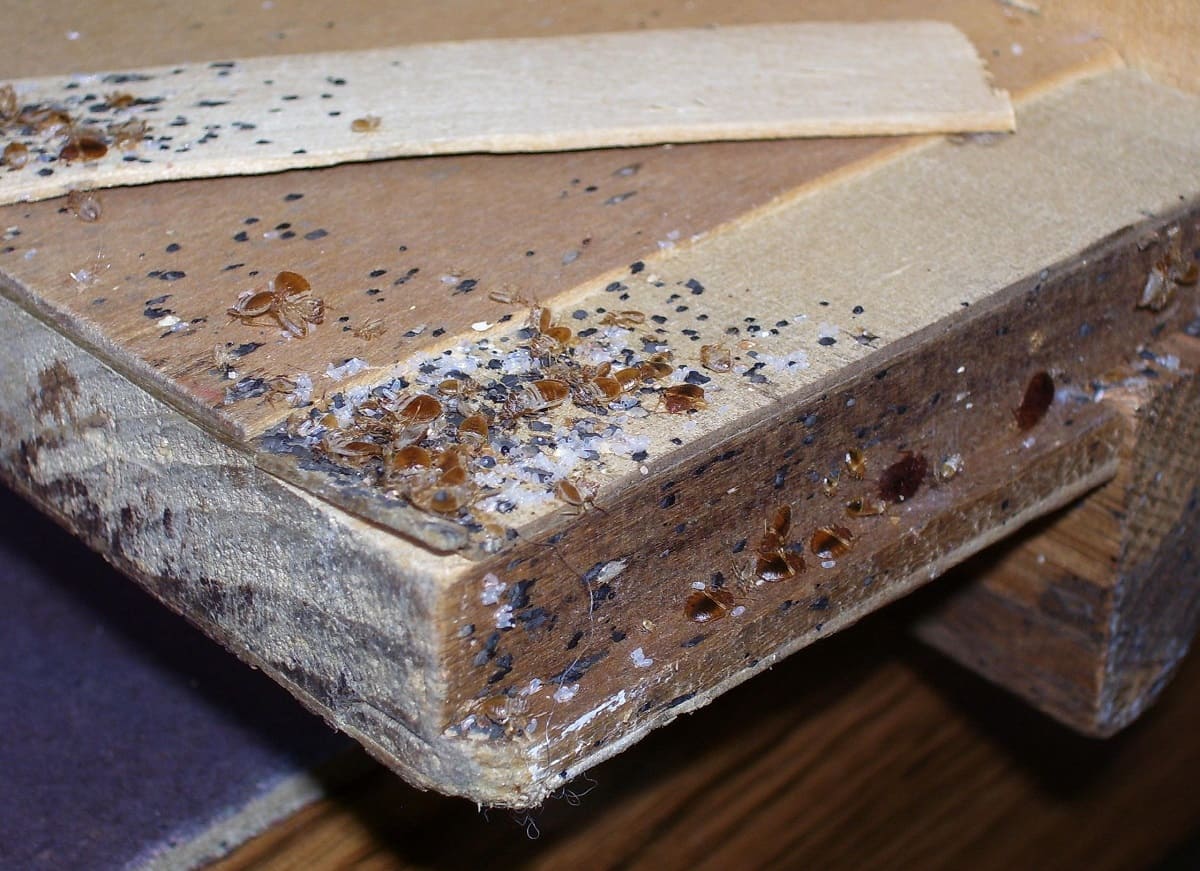Home>Furniture>Bedroom Furniture>What Is A Montessori Bed
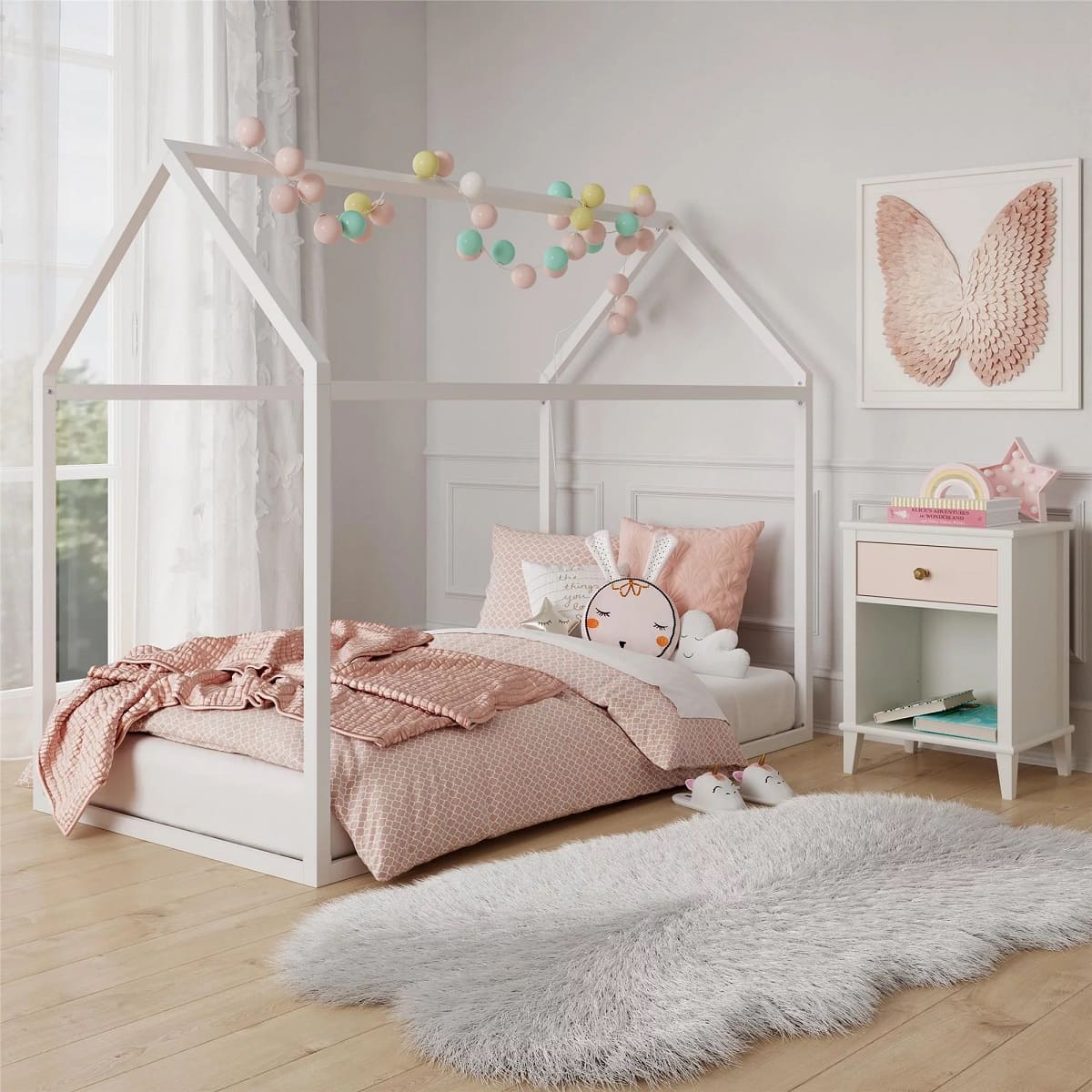

Bedroom Furniture
What Is A Montessori Bed
Modified: January 6, 2024
Discover the benefits of Montessori bed for your child's bedroom. Explore our range of bedroom furniture designed to foster independence and promote a sense of belonging.
(Many of the links in this article redirect to a specific reviewed product. Your purchase of these products through affiliate links helps to generate commission for Storables.com, at no extra cost. Learn more)
Introduction
Welcome to the world of Montessori beds – a unique and innovative approach to creating a nurturing and independent sleeping environment for your child. As parents, we are always looking for ways to support our children’s development and foster their independence. Montessori philosophy, with its emphasis on hands-on learning and self-directed activities, extends to all aspects of a child’s life, including their sleeping arrangements.
But what exactly is a Montessori bed? In simple terms, it is a low-profile, floor-level bed that allows children to have more control over their sleep environment. Inspired by the renowned Italian educator, Maria Montessori, the Montessori bed is designed to promote independence, freedom of movement, and a sense of ownership over their sleep space. It encourages children to explore their surroundings and develop self-reliance from a young age.
In this article, we will delve into the world of Montessori beds, exploring their benefits, how to set them up, how to choose the right one for your child, safety considerations, and transitioning from a crib. Whether you are a parent, caregiver, or simply interested in alternative sleeping arrangements for children, this comprehensive guide will provide you with all the information you need to know about Montessori beds.
Key Takeaways:
- Montessori beds promote independence, creativity, and enhanced sleep quality for children by providing a safe and accessible sleeping environment that fosters autonomy and self-regulation.
- Transitioning to a Montessori bed requires patience, gradual introduction, and consistent routines to ensure a smooth adjustment for children, emphasizing safety and emotional support throughout the process.
Read more: How To Make A Montessori Floor Bed
Definition of a Montessori Bed
Before we dive deeper into the details, let’s start by clarifying what exactly a Montessori bed is. A Montessori bed, also known as a floor bed, is a mattress placed directly on the floor or supported by a low frame. Unlike traditional cribs or toddler beds with high sides, the Montessori bed provides an open and accessible sleeping space for the child.
The philosophy behind the Montessori bed is rooted in the belief that children should have the freedom to move, explore, and make choices within a safe environment. By removing the constraints of a crib, children can develop their independence, decision-making skills, and self-regulation when it comes to sleep.
A Montessori bed allows the child to get in and out of bed independently, encouraging them to listen to their body’s cues and take charge of their sleep routine. It also promotes a sense of responsibility as children learn to make choices, such as when to go to bed and how to arrange their sleeping area.
Key Takeaways:
- Montessori beds promote independence, creativity, and enhanced sleep quality for children by providing a safe and accessible sleeping environment that fosters autonomy and self-regulation.
- Transitioning to a Montessori bed requires patience, gradual introduction, and consistent routines to ensure a smooth adjustment for children, emphasizing safety and emotional support throughout the process.
Read more: How To Make A Montessori Floor Bed
Definition of a Montessori Bed
Before we dive deeper into the details, let’s start by clarifying what exactly a Montessori bed is. A Montessori bed, also known as a floor bed, is a mattress placed directly on the floor or supported by a low frame. Unlike traditional cribs or toddler beds with high sides, the Montessori bed provides an open and accessible sleeping space for the child.
The philosophy behind the Montessori bed is rooted in the belief that children should have the freedom to move, explore, and make choices within a safe environment. By removing the constraints of a crib, children can develop their independence, decision-making skills, and self-regulation when it comes to sleep.
A Montessori bed allows the child to get in and out of bed independently, encouraging them to listen to their body’s cues and take charge of their sleep routine. It also promotes a sense of responsibility as children learn to make choices, such as when to go to bed and how to arrange their sleeping area.
Montessori beds are typically designed to be low to the ground, allowing young children to climb in and out of bed effortlessly. The absence of railings or barriers fosters a sense of freedom and gives children the opportunity to explore and move around their room more freely.
Montessori beds come in various forms, ranging from simple mats or mattresses on the floor to beds with low, sturdy frames. The choice of bed depends on the child’s age, developmental stage, and individual needs. Some parents prefer to start with a mattress on the floor and gradually introduce a low frame as the child gets older.
It is important to note that a Montessori bed is not just about the physical structure but also about creating a sleep environment that aligns with the child’s developmental needs. This includes providing age-appropriate materials and ensuring that the sleeping area is safe, comfortable, and inviting.
Now that we have a clear understanding of what a Montessori bed is, let’s explore the many benefits it offers to children and their overall sleep experience.
Benefits of a Montessori Bed
A Montessori bed offers a multitude of benefits for children in terms of their development, independence, and overall sleep experience. Here are some of the key advantages:
- Independence: A Montessori bed promotes independence by allowing children to have control over their sleep space. With the freedom to get in and out of bed on their own, children develop a sense of autonomy and responsibility for their sleep routine.
- Movement and exploration: By providing a low-profile sleeping surface, a Montessori bed encourages children to move and explore their environment. They can easily get in and out of bed, fostering their gross motor skills and spatial awareness.
- Sense of ownership: With a Montessori bed, children have the opportunity to make choices and arrange their sleeping area according to their preferences. This sense of ownership fosters a greater sense of belonging and personalization, which can positively impact their sleep quality.
- Enhanced sleep quality: The freedom to move and find a comfortable position on a Montessori bed can contribute to better sleep quality for children. They can stretch, roll, and adjust themselves throughout the night to find a position that suits their comfort needs.
- Promotes self-regulation: With a Montessori bed, children have the freedom to listen to their body’s cues and determine when they are tired or in need of rest. This promotes self-regulation and helps them develop a healthy sleep routine.
- Encourages creativity and imagination: With the open space provided by a Montessori bed, children have more room for imaginative play and creative activities. They can use the bed as a stage, a fort, or a cozy reading nook, stimulating their creativity and imagination.
- Smooth transition from crib to bed: Transitioning from a crib to a Montessori bed can be a smoother process for both children and parents. The familiar low-profile design and freedom of movement help children adjust more easily, reducing the potential anxiety often associated with transitioning to a bigger bed.
- Promotes a sense of calm: The minimalistic and unrestrictive nature of a Montessori bed creates a peaceful and calming sleep environment for children. With fewer barriers and distractions, children can feel more relaxed, leading to a more restful sleep experience.
These benefits highlight the positive impact a Montessori bed can have on a child’s sleep and overall well-being. However, it’s important to note that while a Montessori bed offers many advantages, it may not be the right choice for every child or family. It’s essential to consider your child’s unique needs and preferences when deciding on their sleeping arrangements.
Now that we understand the benefits of a Montessori bed, let’s explore how to set up a Montessori bed in your child’s room to create an optimal sleep environment.
How to Set Up a Montessori Bed
Setting up a Montessori bed involves creating a sleep environment that promotes independence, safety, and comfort for your child. Here are the steps to follow when setting up a Montessori bed:
- Choose the right mattress: Select a mattress that is comfortable, supportive, and appropriate for your child’s age and developmental stage. Opt for a firm mattress that provides proper spinal support and avoids any potential suffocation hazards.
- Clear the sleeping area: Remove any clutter or unnecessary items from the sleeping area to create a clean and inviting space for your child. Keep the area around the bed free of obstacles to ensure easy access and movement.
- Secure the mattress: If you’re using a mattress directly on the floor, ensure that it is secure and does not slide or move during sleep. If you prefer to use a low frame, make sure it is sturdy and provides proper support for the mattress.
- Create a safe environment: Ensure that the sleeping area is safe for your child. Remove sharp corners, secure any loose cords or wires, and ensure that the room is well-ventilated and at a comfortable temperature.
- Choose age-appropriate materials: Provide age-appropriate materials near the bed to encourage exploration, creativity, and independent play. This can include books, puzzles, soft toys, or any other toys that align with your child’s current interests and abilities.
- Add cozy bedding: Make the Montessori bed inviting and comfortable by adding cozy bedding, such as soft blankets or a favorite stuffed animal. Avoid using excessive pillows or heavy quilts that may pose suffocation risks for young children.
- Childproof the room: Ensure that the rest of the room is childproofed to guarantee your child’s safety. Secure any furniture or heavy items that could tip over, cover electrical outlets, and install safety gates if necessary.
- Encourage independence: Use the Montessori bed as an opportunity to foster independence in your child. Encourage them to get in and out of bed on their own, choose their own sleepwear, and participate in tidying up their sleeping area.
- Create a bedtime routine: Establish a consistent bedtime routine to signal to your child that it’s time to wind down and prepare for sleep. This can include activities such as reading a book, dimming the lights, and engaging in relaxation techniques.
Remember that every child is unique, and their sleep preferences may vary. Be open to adapting and adjusting the setup of the Montessori bed based on your child’s individual needs and comfort. Regularly assess the sleeping environment to ensure it remains safe and conducive to quality sleep.
Now that you have a solid understanding of how to set up a Montessori bed, let’s move on to the next section – choosing the right Montessori bed for your child.
A Montessori bed is a low-to-the-ground bed designed to promote independence and safety for young children. It allows them to easily get in and out of bed on their own, fostering a sense of autonomy and freedom.
Read more: What Is A Bed
Choosing the Right Montessori Bed for Your Child
When it comes to choosing a Montessori bed for your child, there are a few key factors to consider. Taking into account your child’s age, developmental stage, and individual needs will help you select the right bed that promotes their independence and comfort. Here are some tips to guide you:
- Age-appropriate size: Consider the size of the bed in relation to your child’s age and size. For infants and young toddlers, a crib-sized mattress placed directly on the floor can be a suitable option. As your child grows, you may opt for a larger mattress or a low frame that accommodates their changing needs.
- Safety features: Prioritize safety when choosing a Montessori bed. Ensure that the bed is sturdy, stable, and free from any potential hazards. Look for rounded edges, non-toxic materials, and a design that minimizes the risk of entrapment or falls.
- Low-profile design: A key characteristic of a Montessori bed is its low-profile design, which allows for easy access and movement. Choose a bed that is low to the ground, allowing your child to get in and out of bed independently without the need for assistance.
- Quality and durability: Invest in a high-quality Montessori bed that is built to last. Look for materials that are sturdy, easy to clean, and can withstand daily use. This ensures that the bed will serve your child well throughout their early years.
- Flexibility: Consider the versatility of the Montessori bed. Some beds offer the option to add or remove frames, allowing for easy adjustments as your child grows. Additionally, choose a bed that can be easily integrated into your child’s evolving sleep environment.
- Aesthetic appeal: While the primary focus is on functionality and safety, you can also consider the aesthetic appeal of the Montessori bed. Whether you prefer a simple and minimalist design or one that matches your child’s room decor, choose a bed that complements the overall aesthetic of the space.
- Reviews and recommendations: Read reviews and seek recommendations from other parents who have experience with Montessori beds. Their insights can provide valuable information and help you make an informed decision.
Remember that every child is different, and what works for one may not work for another. Take into account your child’s unique needs, preferences, and developmental stage when selecting a Montessori bed.
Additionally, keep in mind that a Montessori bed is just one component of creating a Montessori-inspired sleep environment. Consider other elements such as soft lighting, engaging materials, and age-appropriate decorations to further enhance the sleep space.
Now that you have a clear understanding of how to choose the right Montessori bed for your child, let’s move on to the next section – safety considerations for Montessori beds.
Safety Considerations for Montessori Beds
While Montessori beds offer numerous benefits for children, ensuring their safety is of utmost importance. Here are some key safety considerations to keep in mind when setting up a Montessori bed:
- Secure the mattress: Ensure that the mattress is securely in place and does not slide or move during sleep. This helps prevent any potential trapping or entrapment hazards. If using a low frame, make sure it is sturdy and properly assembled to support the mattress.
- Ensure a safe sleep environment: Remove any objects or items that could pose a suffocation or choking hazard from the sleeping area. This includes pillows, heavy blankets, stuffed animals, and loose bedding. Use a fitted sheet that securely wraps around the mattress.
- Childproof the room: Make sure the rest of the room is childproofed, especially if your child has the freedom to move around during sleep. Secure furniture, cover electrical outlets, and keep cords or wires out of reach. Use safety gates if necessary to prevent access to potentially hazardous areas.
- Ensure proper ventilation: Ensure that the room is well-ventilated to maintain a comfortable and safe sleep environment. Keep windows secure with childproof locks or guards, and consider using a fan or air purifier if needed for airflow.
- Monitor for temperature regulation: Keep an eye on the temperature in the room to ensure it is comfortable for your child. Dress them appropriately for sleep and avoid overheating or excessive coldness. Use breathable bedding materials that do not contribute to overheating.
- Regularly inspect the bed: Regularly inspect the bed, mattress, and surrounding area for any signs of wear or potential hazards. Check that the bed frame, if used, remains secure and free from loose parts. Replace any damaged materials or parts as necessary.
- Supervise young children: While Montessori beds promote independence, it’s important to provide supervision, especially for younger children. Observe their movements during sleep and ensure they are safe. Make any necessary adjustments to the sleeping environment to mitigate potential risks.
- Education and guidance: Educate your child about safe sleep practices and guide them in understanding how to use their Montessori bed responsibly. Teach them to respect their sleep space and the boundaries set for their safety.
By following these safety considerations, you can create a secure sleep environment for your child while still supporting their independence and fostering a sense of ownership over their sleep routine.
It’s essential to remember that safety guidelines should always be personalized to your child’s age, developmental stage, and individual needs. Regularly reassess and make adjustments to the sleeping environment as your child grows and develops.
With the safety of your child in mind, let’s move on to the next section – transitioning from a crib to a Montessori bed.
Transitioning from a Crib to a Montessori Bed
Transitioning from a crib to a Montessori bed is an exciting milestone for both children and parents. This process allows children to develop their independence and adapt to a new sleep environment. Here are some tips to help you navigate the transition successfully:
- Timing is key: Consider your child’s readiness for the transition. Most children are ready to move to a Montessori bed between the ages of 2 and 3, but every child is different. Look for signs that your child is physically and emotionally prepared, such as showing curiosity about the bed or attempting to climb out of the crib.
- Introduce the new bed gradually: Instead of making the switch overnight, introduce the Montessori bed gradually. Start by placing the new bed in your child’s room alongside the crib. Allow them to explore and become familiar with it during playtime or before nap time.
- Involve your child in the process: Include your child in the transition process to promote their sense of ownership and excitement. Let them help choose the new bed and bedding, and involve them in setting up the sleep space. This involvement can increase their emotional investment in the transition.
- Maintain a consistent routine: Stick to a consistent bedtime routine to provide a sense of familiarity and security during the transition. The consistency of the routine can help ease any anxiety or uncertainty your child may feel about the new sleeping arrangement.
- Ensure a safe sleep environment: Prioritize safety during the transition. Remove any potential hazards from the sleeping area and childproof the room. Ensure that the new bed is secure, stable, and free from any sharp edges or loose parts that could cause injury.
- Provide reassurance and support: Be prepared for some resistance or adjustment difficulties during the transition. Offer comfort, reassurance, and support to your child if they experience any anxiety or difficulties adjusting to the new bed. Provide extra cuddles, read bedtime stories, and offer praise for their efforts.
- Monitor and intervene if necessary: Keep an eye on your child during the transition period. If they have difficulty staying in bed or adjusting to the new sleep routine, gently redirect them back to bed and provide calm reminders. Be patient and persistent, as it may take time for your child to fully adjust.
- Celebrate milestones: Celebrate your child’s accomplishments and milestones during the transition. Acknowledge their efforts in staying in their bed and gradually adapting to the new sleep environment. Offer positive reinforcement and rewards to motivate and encourage them.
Remember that each child is unique, and the transition from a crib to a Montessori bed may vary in duration and ease. Be patient, flexible, and understanding throughout the process, and always prioritize your child’s safety and well-being.
With these tips in mind, you can support your child’s successful transition from a crib to a Montessori bed and create a positive sleep experience for them.
Now that we have covered the transition process, let’s move on to addressing some frequently asked questions about Montessori beds.
Frequently Asked Questions about Montessori Beds
As Montessori beds gain popularity, it’s common for parents and caregivers to have questions about this unique sleep arrangement. Here are some frequently asked questions about Montessori beds, along with their answers:
- At what age can I transition my child to a Montessori bed?
Most children can transition to a Montessori bed between the ages of 2 and 3, but it ultimately depends on your child’s readiness. Look for signs that they are physically and emotionally prepared, such as showing curiosity about the bed or attempting to climb out of the crib. - Is a Montessori bed safe for young children?
Yes, when set up and used correctly, Montessori beds can be safe for young children. Ensure that the bed is low to the ground, secure, and free from any potential hazards. Follow safety guidelines, childproof the room, and monitor your child during sleep. Regularly assess the bed and surrounding area for any safety concerns. - Can I use a Montessori bed for a newborn or infant?
It is generally recommended to use a crib or bassinet for newborns and infants, as they require a more enclosed and secure sleep space. As your child grows and reaches an age where they can safely move and explore, you can consider transitioning to a Montessori bed. - Do I need a bed frame for a Montessori bed?
No, a bed frame is not necessary for a Montessori bed. You can choose to place the mattress directly on the floor to provide an accessible sleeping surface for your child. However, if you prefer to use a low frame, ensure that it is sturdy, securely assembled, and correctly sized for the mattress. - What are some alternatives to a Montessori bed?
If a Montessori bed doesn’t suit your child or family’s needs, there are alternatives to consider. Some options include floor mattresses, low-profile toddler beds, or traditional cribs with adjustable sides that can be lowered as your child grows. - Will using a Montessori bed affect my child’s sleep routine?
Transitioning to a Montessori bed may initially impact your child’s sleep routine as they adapt to the new sleep environment. However, with consistency, reassurance, and patience, most children adjust smoothly. Establishing a consistent bedtime routine and providing a safe and comfortable sleep environment can help maintain a positive sleep routine. - Can I still use a Montessori bed if my child co-sleeps?
Yes, a Montessori bed can still be used if you practice co-sleeping with your child. You can place a Montessori bed alongside your own bed to create a safe and independent sleep space for your child, while still being within reach for nighttime comfort or feedings. - Is a Montessori bed suitable for all children?
While Montessori beds offer many benefits, they may not be suitable for all children or families. Factors such as the child’s sleep preferences, safety considerations, and individual needs should be taken into account. It’s important to choose a sleep arrangement that best supports your child’s well-being and development.
These frequently asked questions and their answers provide a better understanding of Montessori beds, allowing you to make informed decisions regarding your child’s sleep environment.
Now that we have addressed common questions, let’s wrap up this comprehensive guide.
Read more: What Is A Swing Bed
Conclusion
Choosing a Montessori bed for your child can have a significant impact on their development, independence, and sleep experience. Montessori beds provide children with the freedom to explore, make choices, and develop a sense of ownership over their sleep space. By creating a safe and nurturing sleep environment, you can support their physical, emotional, and cognitive growth.
Throughout this comprehensive guide, we’ve explored the definition of a Montessori bed, its benefits, how to set it up, safety considerations, transitioning from a crib, and frequently asked questions. We’ve highlighted the importance of considering your child’s age, developmental stage, and individual needs when choosing a Montessori bed. Safety should always be a top priority, and regular monitoring and adjustment are necessary to ensure a secure sleep environment.
As you embark on the journey of incorporating a Montessori bed into your child’s life, remember to be patient, flexible, and supportive. Each child is unique, and their transition to a Montessori bed may vary. In time, with consistency and adherence to a bedtime routine, your child will adjust and thrive in their new sleep environment.
While Montessori beds offer numerous benefits, it’s essential to remember that they are just one aspect of creating a Montessori-inspired lifestyle for your child. Emphasize independence, provide age-appropriate materials, and encourage exploration and creativity in all areas of their life.
We hope this guide has provided you with a deep understanding of Montessori beds and their role in supporting your child’s growth. Remember to adapt the information to suit your child’s individual needs and preferences.
Here’s to creating a nurturing and independent sleeping environment for your child with a Montessori bed. Restful nights and joyful discoveries await!
Frequently Asked Questions about What Is A Montessori Bed
Was this page helpful?
At Storables.com, we guarantee accurate and reliable information. Our content, validated by Expert Board Contributors, is crafted following stringent Editorial Policies. We're committed to providing you with well-researched, expert-backed insights for all your informational needs.
